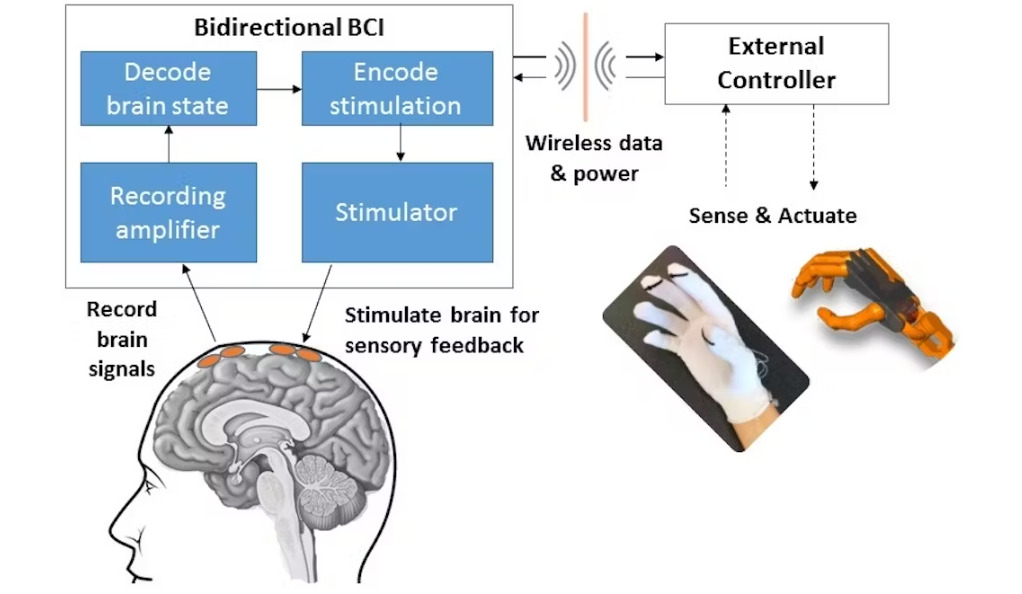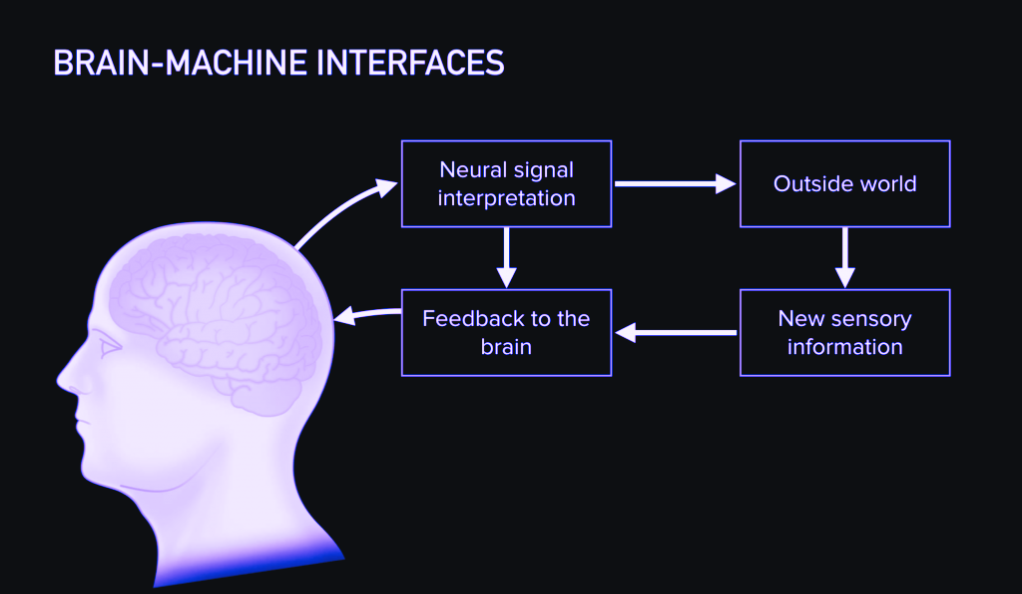Neural Interfaces: Bridging the Gap Between Mind and Machine
Neural interfaces, often referred to as brain-computer interfaces (BCIs), are systems that enable direct communication between the human brain and external devices. These interfaces can be invasive, semi-invasive, or non-invasive, depending on the method of connection. The primary goal of these systems is to decode the complex neural activity and translate it into actionable commands for machines, thereby creating a seamless bridge between our organic processing unit and digital devices.
The fascination with interfacing the brain with machines has been a part of human imagination for decades, often portrayed in science fiction. Today, what was once fiction is rapidly becoming a reality, with researchers and scientists making significant strides in understanding the brain’s intricate workings and how to interface with it.
The Evolution of Neural Technology
The concept of neural interfaces isn’t new. Early experiments in the 1970s involved simple electrode implants in animal brains. These rudimentary experiments laid the foundation for today’s sophisticated interfaces. Over the decades, the technology has evolved, with advancements in neuroimaging, microelectronics, and data processing driving progress.
The journey from those initial experiments to today’s advanced BCIs has been marked by both successes and challenges. As our understanding of the brain’s complex architecture deepened, so did our ability to develop more refined and effective interfaces. Today, we stand at a point where BCIs are not just experimental tools but are finding real-world applications.
How Neural Interfaces Work
At the core of BCIs is the translation of neuronal information into commands. Electroencephalography (EEG) is a common non-invasive method, capturing brainwaves to interpret intentions. These brainwaves are electrical patterns that the brain produces when engaged in different activities. By analyzing these patterns, BCIs can determine user intentions and translate them into commands.
Another method involves implanting electrodes directly into the brain. These invasive methods can capture signals with higher accuracy and granularity. However, they come with their own set of challenges, including potential health risks and the complexity of surgical implantation.

Applications in Medicine
Neural interfaces have shown immense promise in the medical field. One of the most profound applications is in restoring motor functions. Patients with paralysis, due to spinal cord injuries or conditions like ALS, can regain movement through neural-controlled prosthetics. These prosthetics, driven by the patient’s own neural signals, can perform tasks ranging from simple grips to complex movements.
Another groundbreaking application is in overcoming speech impairments. BCIs can help those who can’t speak, due to conditions like locked-in syndrome, communicate through synthesized speech. By interpreting the brain’s intent, these systems can generate speech or text, giving a voice to those who had lost it.
The World of Entertainment and Gaming
Beyond medicine, the entertainment industry is eyeing BCIs for immersive experiences. Imagine controlling a video game character with just your thoughts! This would take gaming immersion to an entirely new level, where players are truly one with the game. Developers are experimenting with games that adapt in real-time based on a player’s emotional state, detected through BCIs.
Virtual reality (VR) and augmented reality (AR) platforms can also benefit immensely from BCIs. Instead of relying on handheld controllers or gestures, users could navigate virtual spaces using their thoughts, making the experience more intuitive and immersive.
Ethical Considerations
With great power comes great responsibility. Neural interfaces, especially invasive ones, raise several ethical concerns. The foremost is privacy. As BCIs can potentially read thoughts, there’s a risk of unauthorized access to one’s most private thoughts and memories. Ensuring robust security measures is paramount.
Another concern is consent, especially in medical applications. Patients must be fully informed about the risks and benefits, and their autonomy in decision-making must be respected. Additionally, the potential for misuse, such as unauthorized behavior modification or enhancement, is a topic of debate in the BCI community.
Challenges and Limitations
While promising, BCIs face several hurdles. Signal noise is a significant challenge. The brain is a complex organ, and accurately interpreting its signals amidst the ‘noise’ is a daunting task. Advanced algorithms and machine learning models are being developed to improve signal clarity and interpretation.
Another concern is the long-term use of BCIs, especially invasive ones. The effects of having foreign materials like electrodes in the brain over extended periods are still unknown. Research is ongoing to develop biocompatible materials that minimize any adverse reactions.
Future Prospects
With advancements in AI and machine learning, the potential applications of BCIs are limitless. Enhanced learning is one area under exploration. Imagine downloading information directly to your brain or enhancing your cognitive abilities using external processors!
Telepathic communication is another exciting prospect. While it may sound like science fiction, researchers are optimistic that future BCIs could enable direct brain-to-brain communication, bypassing traditional language barriers and allowing for more profound, nuanced exchanges.
Startups and Innovators Leading the Way
The BCI space is buzzing with startups and innovators. Companies like Neuralink, founded by Elon Musk, are making headlines with their ambitious plans. Neuralink aims to develop high-bandwidth BCIs that can address a range of neurological conditions and eventually enhance human cognition.
Another notable player is Neurable, which is focusing on non-invasive BCIs for gaming and entertainment. Their technology promises to revolutionize how we interact with digital content, making experiences more immersive and intuitive.

Conclusion: The Convergence of Mind and Machine
As we stand on the brink of a new era, the fusion of mind and machine through neural interfaces promises a future where our very thoughts can shape reality. The potential applications are vast, from medical miracles to enhanced human-machine symbiosis. As technology continues to advance, the line between human and machine may become increasingly blurred, leading us into a future of unparalleled possibilities.
FAQs
There are three primary types of neural interfaces. Invasive interfaces involve electrodes implanted directly into the brain, offering high-resolution data but with increased risks. Semi-invasive interfaces place electrodes on the brain’s surface, providing a middle ground in terms of data quality and risk. Non-invasive methods, like EEG, capture brain activity externally, offering safety but at the cost of resolution. Each type has its own set of advantages and challenges, and the choice depends on the specific application and desired outcomes.
The safety of neural interfaces varies based on the type. Non-invasive methods like EEG are generally safe with minimal risks. Invasive methods, on the other hand, carry risks associated with surgical implantation, such as infection, bleeding, or tissue damage. However, advancements in surgical techniques and materials are continually being made to improve safety. It’s essential to consult with medical professionals and be informed about potential risks before opting for any BCI procedure.
The potential for BCIs to enhance cognitive abilities is a topic of active research. Preliminary studies suggest that BCIs, in conjunction with external processors and AI, could potentially boost memory, learning speed, or even skills like problem-solving. However, it’s essential to note that this field is still in its infancy, and concrete applications are yet to be realized. The ethical implications of cognitive enhancement also need careful consideration.
Given the nascent stage of technology, regulations are still evolving. However, medical applications of BCIs undergo rigorous testing and approval processes similar to other medical devices. Regulatory bodies worldwide are closely monitoring BCI developments to ensure safety, efficacy, and ethical considerations are addressed.
While certain applications, especially in medicine, are already in use, widespread consumer adoption might take a decade or more. The challenges, both technical and ethical, need addressing before BCIs become a common tool. However, with the pace of current research and development, it’s optimistic to expect significant advancements in the coming years.
